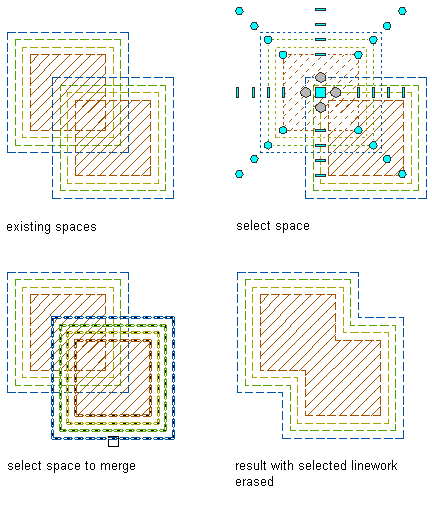If you merge spaces that have manual boundary offsets, each activated boundary on the first space is merged with the corresponding boundary on the other space (base with base, net with net, and so on).
If a manual space boundary on the first space is not activated (displaying its grips), it is not included in the merge operation. Whether the boundaries on the second space are activated is not relevant for the merge. They are merged if their corresponding boundary on the first space is activated. If a boundary on the first space is not activated, the existing boundary on the first space will remain as it is, and the corresponding boundary on the second space will be deleted. This can result in irregular space boundaries. To avoid this, make sure that on the first space all relevant boundaries are activated, and can be merged.
The display properties of the boundaries of the first selected space are applied to the resulting merged boundary. For example, if the net boundary of the first space is red with a lineweight of 0.18 mm, the net boundary of the resulting merged space will be red with a lineweight of 0.18 mm.

Merging spaces with manual boundaries